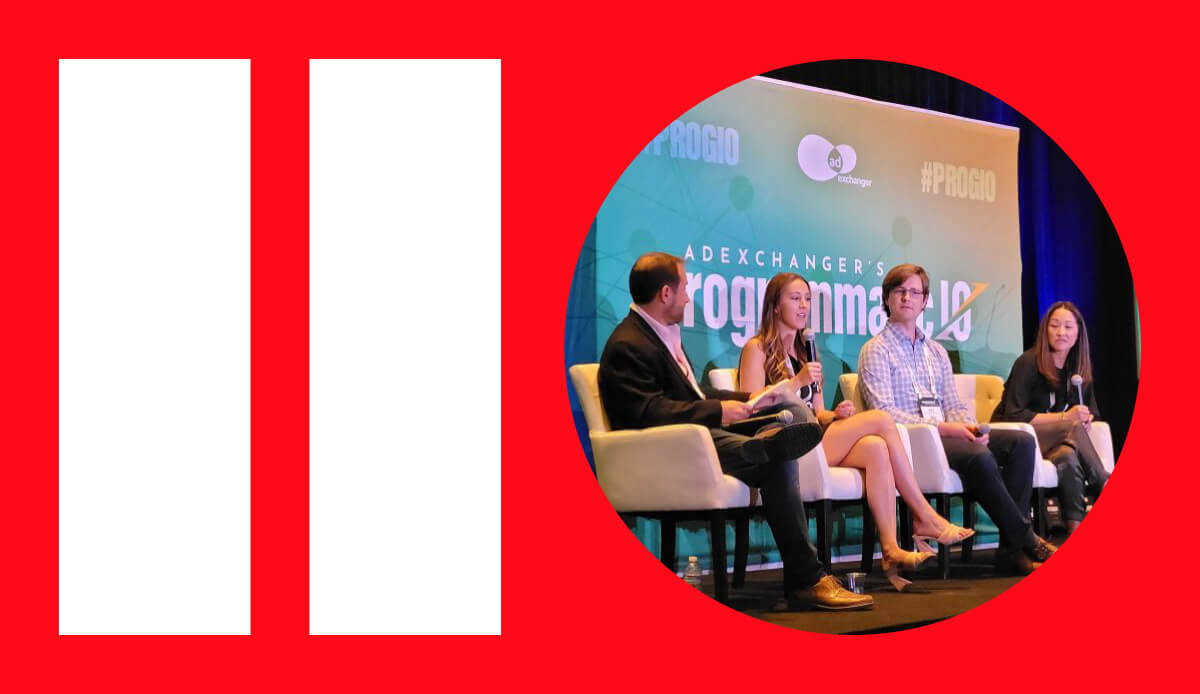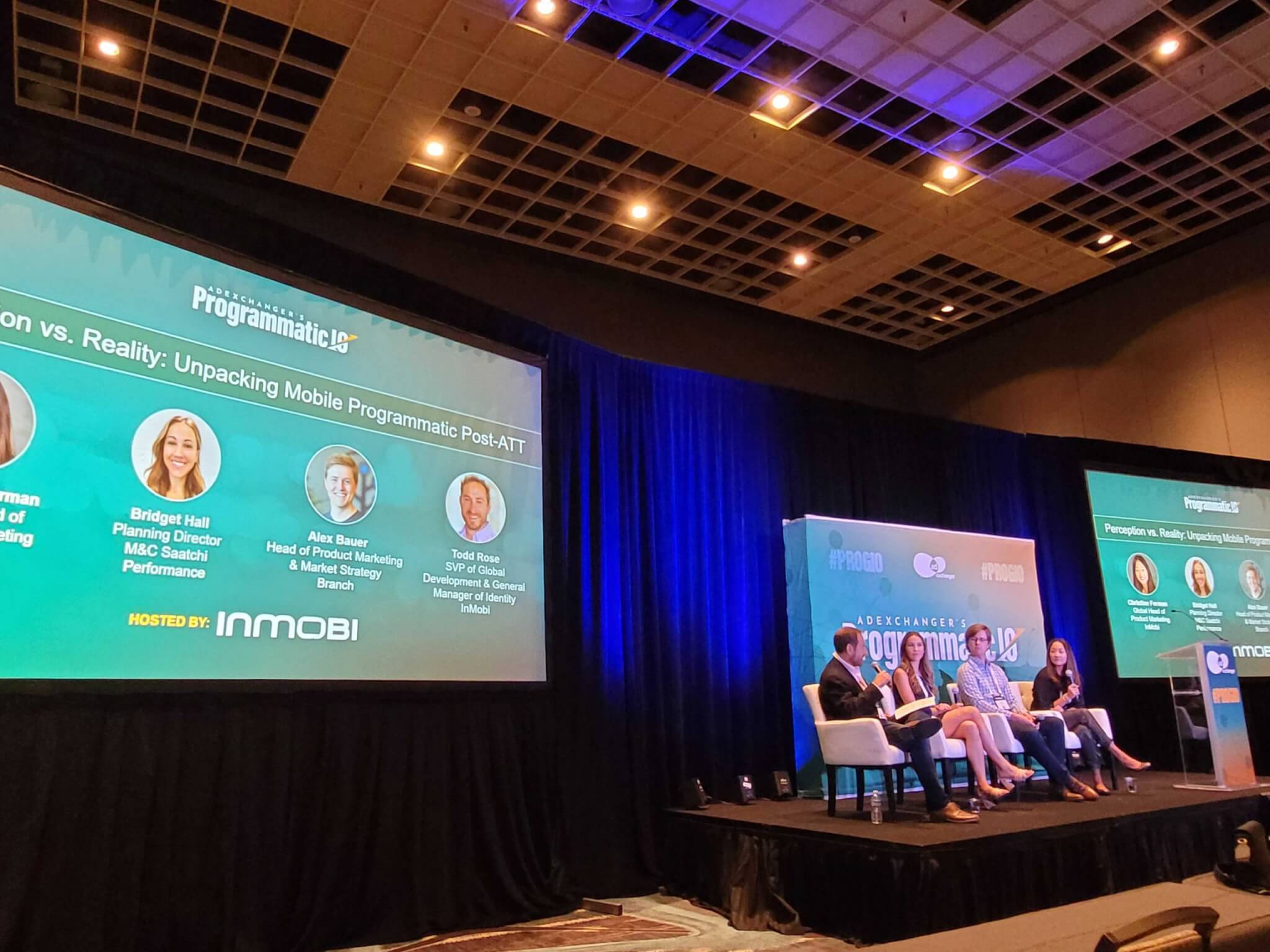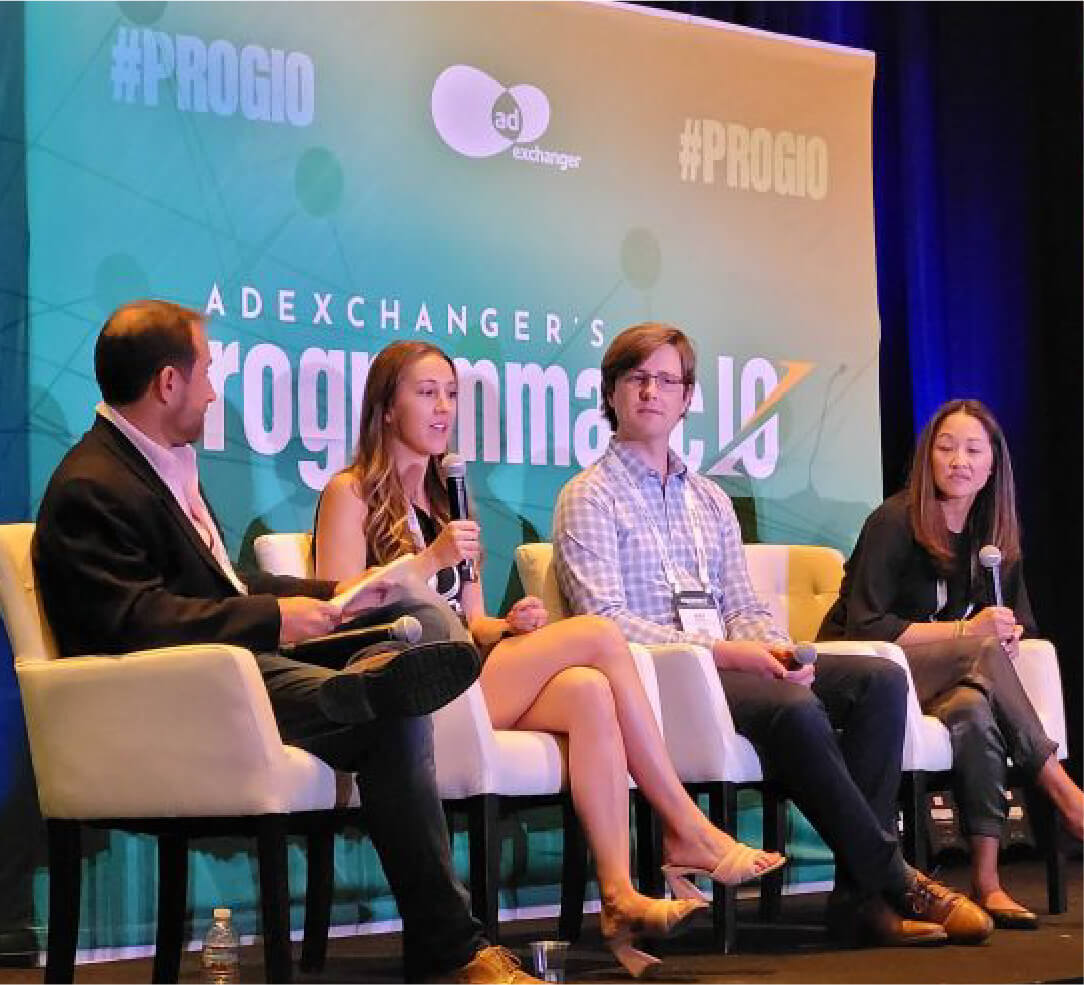
Recently, Bridget Hall, Planning Director, was invited to take part in a panel at Programmatic IO alongside partners InMobi and Branch. As the name suggests, Programmatic IO is a conference that specializes in topics devoted to the world of programmatic advertising. We work closely with many partners, suppliers, ad networks, etc, and were delighted to be able to work with InMobi and Branch on a series of conferences over the past couple of weeks.
At Programmatic IO, the topic of the panel was; ‘Perception vs Reality: Unpacking Mobile Programmatic Post-ATT’. Providing an excellent opportunity to discuss strategic implications a year after Apple’s rollout of App Tracking Transparency.
This subject has and is still causing many marketers to evaluate their campaign strategies and performance. The panel covered everything from the key challenges post-ATT, to how campaigns can still be optimized, and what the future might hold with Google’s Privacy Sandbox.
Key points from the panel:
- Identify key metrics that are indicative of driving lifetime value for each advertiser before campaign setup. In some instances, it makes more sense to optimize towards a more immediate KPI on iOS or use a proxy
- Campaign structure is now more important than ever. When launching with a new partner, be very clear about the level of granularity you need to pass back via Campaign ID, eg creative theme, ad size, publisher, etc
- Consider testing optimization by running across PMPs or bundling traffic rather than running on open exchange, because SKAdNetwork requires each campaign to hit a non-defined conversion volume in order to provide transparency and if you don’t hit this threshold then the data will be ‘null’
- Smaller brands are likely to be more heavily affected than larger ones as they are likely to have a lower spend and therefore it will be harder for them to hit the conversion volume threshold.
- Testing the channel mix is a good idea while considering your customer journey, eg TV to mobile, or TV to web to engage audiences on the most influential screens. For example, during New Fronts YouTube announced they will soon allow advertisers to generate further engagement with Connected TV ads by letting viewers send links directly to their phones or other connected second screens. Custom creative (ex: Brightline or Hulu) pushing Connected TV viewers to mobile with QR codes and more interactive video ads is also an interesting approach.
- If advertisers migrate away from deterministic attribution to media mixed modeling, it opens up more opportunities to invest in a wider range of channels, for example, CTV, or review previously undervalued channels.
- It’s ok not to have all the answers right now! What works for one brand may not be so clear cut for another, and therefore the need to test & learn is greater than ever


Left to right: Todd Rose (InMobi), Bridget Hall (M+C Saatchi Performance), Alex Bauer (Branch), and Christine Forman (InMobi) discuss how an increasingly privacy-conscious mobile landscape is affecting marketing strategies at Programmatic IO.
Elsewhere at Programmatic IO…
During the rest of the conference, we took the opportunity to attend discussions with leading advertising networks, data providers, industry experts, etc, all ideating the future of programmatic. Here is a brief summary of points of interest.
- In the debate around Programmatic vs Walled Gardens, iOS results on walled gardens such as Facebook, Snapchat, and YouTube have been, in many cases, negatively impacted after the rollout of App Tracking Transparency motivating each supplier to take their own approach to model conversions.
- It is predicted that ad dollars on walled gardens will decrease as a result. This trend may be compounded by the great surge of ad dollars moving into Connected TV. CTV offers a way of strategically targeting specific audiences without reliance on Device IDs or 3rd party cookies (instead reliant on Automated Content Recognition and IP Addresses).
- Although booming, CTV is not without its challenges. A recurring topic discussed at Programmatic IO was the challenge of frequency capping. Panelist Tyler Fitch SVP, Advanced TV & Partnerships at Tubi educated the crowd on Tubi’s newly announced Advanced Frequency Management – this is an advanced frequency tool that caps exposure at the campaign level, regardless of supply source.
- Within the CTV space, SSP’s Magnite was highlighted. Why? Because Magnite recognized the rapid rise of CTV advertising and merged with the right technology partners to secure a favorable position. After merging with Telaria, a provider of CTV technology, and acquiring SpotX and SpringServe, Magnite revenue driven by CTV went from 0% in 2019 to 40% by the end of 2021.
Contact us if you are interested in finding out more about how we have helped clients navigate through recent privacy changes.

